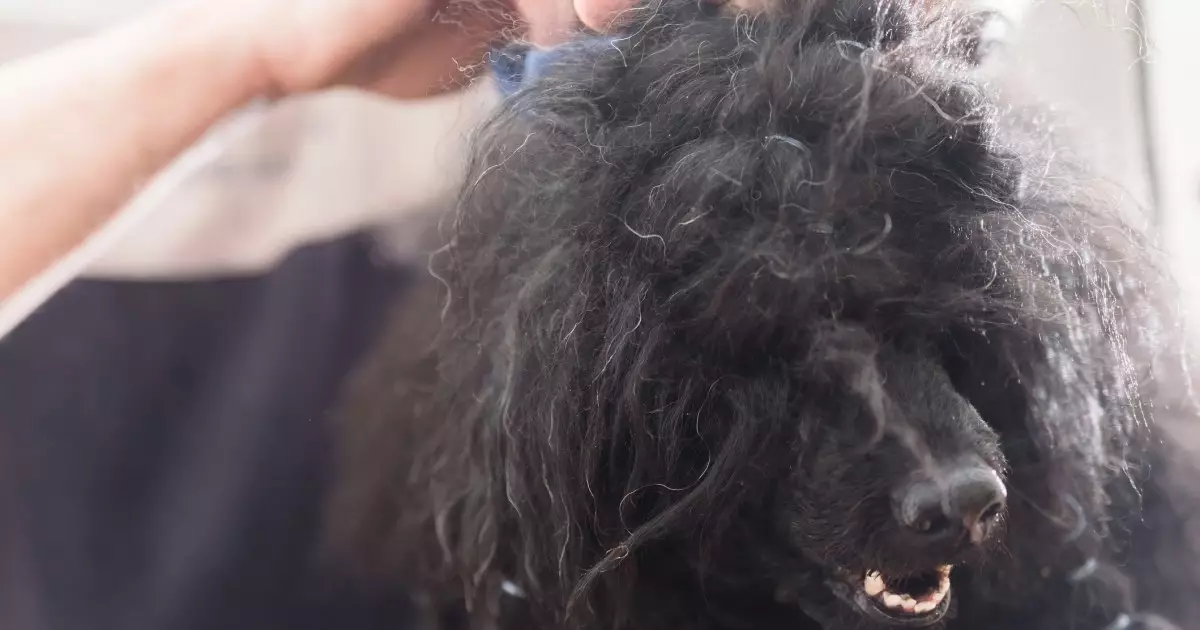Maintaining the health and aesthetics of a dog’s coat is a fundamental aspect of responsible pet ownership. Among the various grooming challenges that pet parents encounter, dealing with matted fur emerges as one of the most significant hurdles. Matted fur not only detracts from your dog’s appearance but can also pose serious health risks, causing discomfort and potential skin issues. This article will explore the nature of matted fur, its causes, effective prevention strategies, and when to seek professional assistance.
Before delving into solutions, it is crucial to understand the various factors that contribute to matting. Matted fur occurs when the coat becomes tangled and knotted, leading to clumps that can irritate the skin and create hotspots. Several elements can lead to this condition:
1. **Infrequent Grooming**: Dogs that boast long or curly coats require routine grooming; otherwise, loose hairs can become intertwined. When grooming is neglected, these tangles intensify, resulting in mats that can be challenging to remove.
2. **Environmental Factors**: Outdoor activities can expose dogs to various elements such as mud, moisture, and debris. Any form of moisture, whether from swimming or rain, can dramatically increase the likelihood of fur becoming matted. Similarly, dirt and sand often picked up during excursions can contribute to the entanglement of hair.
3. **Health Concerns**: Certain medical conditions, including skin allergies or hormonal imbalances, can lead to excessive shedding or changes in the texture of the fur. Such issues may cause loose fur to cling to longer hairs, hastening the formation of mats.
4. **Breed Disposition**: While all dog breeds can suffer from matting, those with long or textured coats—such as Poodles, Shih Tzus, and Collies—are particularly susceptible. Their luxurious fur requires consistent maintenance to remain tangle-free.
Preventing matting is far more practical than attempting to remedy it after it develops. Implementing a grooming routine can significantly mitigate the risk of your dog developing matted fur:
1. **Routine Brushing**: For dogs prone to tangling, regular brushing is essential. Depending on the coat type, brushing can be a daily or weekly task. For long-haired breeds, aim for daily sessions to ensure knots and tangles are addressed promptly.
2. **Appropriate Tools**: Invest in high-quality grooming tools tailored to your dog’s coat type. Utilizing brushes or combs designed for specific fur textures enhances the efficiency of grooming sessions.
3. **Thorough Drying**: After bathing or outdoor sprints in the rain, ensure that your dog’s coat is completely dry. Moisture not only creates a breeding ground for mats but can also exacerbate skin issues.
4. **Periodic Trims**: Regular trimming can decrease the likelihood of mats forming, especially in areas that typically become tangled, such as behind ears or under the legs. Many pet owners find that scheduling professional grooming sessions every few months is beneficial for coat maintenance.
Despite your best preventive efforts, mats can still form. If you discover mats in your dog’s fur, it’s important to address them with caution to minimize discomfort:
1. **Gentle Handling**: Always approach matting with care. Tugging too hard can result in pain or distress for your pet. Instead, employ a gentle touch and gradually work through the tangles.
2. **Use of Detangling Sprays**: Applying a dog-friendly detangler can ease the process of removing mats. This product assists in loosening the hair, making it easier to comb through.
3. **Working from the Edges**: Begin dematting by targeting the edges of the mat. Slowly work inward with your comb or fingers, easing apart the strands without force.
4. **Positive Reinforcement**: Make the grooming experience more enjoyable for your dog by rewarding them with treats or gentle praise throughout the process. This positive association can help alleviate anxiety during grooming sessions.
In some cases, the severity of matting may require professional assistance. Here are scenarios where contacting a groomer is advisable:
1. **Severe Matted Fur**: If the matting is particularly dense or widespread, a professional groomer possesses the expertise and tools necessary for safe removal.
2. **Sensitive Areas**: Mats that form near delicate areas, such as eyes, ears, or genitals, require specialized care that professional groomers are trained to provide.
3. **Nervous or Anxious Dogs**: If your dog exhibits anxiety during grooming, a professional groomer can often manage the situation with a calmer demeanor and more experience than a nervous pet owner might possess.
4. **Routine Maintenance**: Regular trips to the groomer can help maintain a healthy coat, preventing the recurrence of excessive matting.
Dealing with matted fur can be a daunting task for pet owners, but with proactive strategies and an understanding of grooming needs, you can ensure your dog looks and feels their best. By recognizing the causes of matting, applying effective preventative measures, and knowing when to consult a professional groomer, you can maintain your furry companion’s coat in a healthy and beautiful condition. Embrace the routine grooming habits, and your dog will thank you with a full-bodied wag of their tail!

